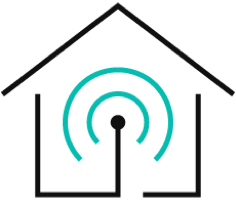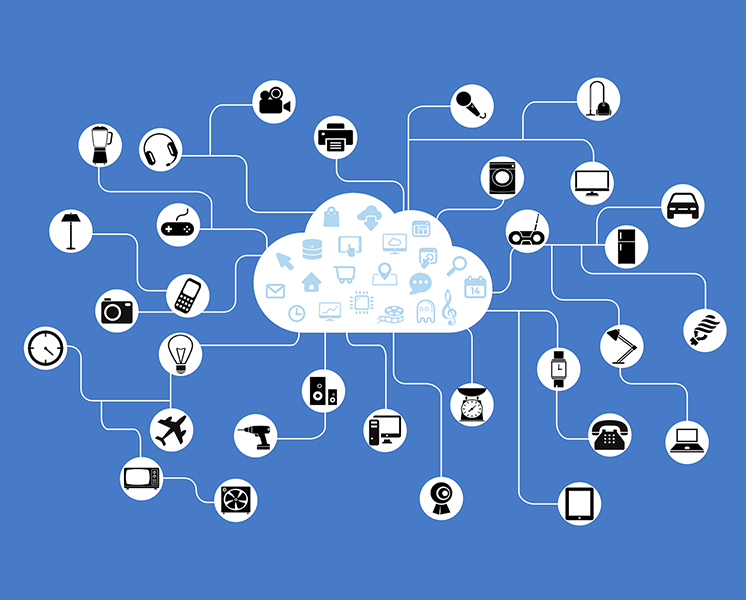IoT security is a broad word that refers to the plans, instruments, systems, procedures, and techniques employed to safeguard every facet of the internet. Physical components, applications, data, and network connections must all be protected to guarantee the availability, integrity, and confidentiality of IoT ecosystems.
Due to the large number of security issues that are frequently found in IoT systems, there are numerous security challenges. Robust IoT security covers all aspects of defense, such as hardening components, monitoring, updating firmware, controlling access, detecting threats, and patching vulnerabilities. IoT security is essential since these systems are widespread, insecure, and a prime target for attacks. By protecting IoT devices from unwanted access, it can be prevented that they would leak important data or act as a gateway into other areas of the network.
On the development end, Evvr is producing exceptional products in the IoT sector, including its flagship Evvr Center Lite. It is a wireless smart home controller that lets you connect and control Zigbee and Z-Wave devices via Evvr innovative application.
- IoT Security Issues, Challenges, & Risks
- Common IoT Use Cases
- Vulnerabilities In Smart And IoT Devices
- How To Secure IoT Devices On Home Network
- 4 Definitive Tips To Keep Your IoT Devices Secure
- FAQs of IoT Security solutions
IoT Security Issues, Challenges, & Risks
Poor Visibility
Maintaining an accurate inventory of what needs to be safeguarded and monitored is impossible since users frequently deploy Internet of Things devices without the knowledge of IT departments of service providers.
Constrained Security Integration
Integrating the Internet of Things devices into existing security infrastructure can be difficult. It may even be impossible due to both known and unknown variables of the IoT. These include inter-compatibility, firmware support, and more.
Code Vulnerabilities
The firmware built for the Internet of Things devices frequently includes open-source software, which is prone to bugs and security flaws. Proprietary software solutions are better, but they are not devoid of their problems.
Excessive Data Volumes
The amount of data generated by the Internet of Things devices makes it challenging to keep an eye on the data, manage it, and protect it.
Lack-Luster Testing Practices
The majority of developers working on Internet of Things systems do not make security a priority. As a result, they cannot conduct adequate vulnerability testing to uncover areas of weakness in IoT systems.
Attack Prone APIs
It is common practice to employ application programming interfaces (APIs) as entry points to command and control centers from which assaults such as SQL injection, distributed denial of service (DDoS), man-in-the-middle attacks (MITM), and network breaches are launched.
Weak Passwords
Many Internet of Things devices come pre-configured with default passwords, and most users don't bother to update them. This makes it easy for cybercriminals to gain access. In other instances, users establish passwords that are not secure and are easily guessed by others.

Common IoT Use Cases
Manufacturing, automotive, healthcare, logistics, energy, agriculture, and other sectors use IoT technologies. Depending on the objectives of a specific IoT system, smart devices can range from basic sensors to gear for DNA analysis. The most common IoT devices and application cases are:
- Systems for home automation keep an eye on and manage features like temperature, lighting, entertainment, appliances, and alarms. Assistant speakers, thermostats, refrigerators, plugs, and light bulbs are standard smart home automation equipment.
- Healthcare professionals and patients can monitor each other's health thanks to medical IoT (MIoT). Fitbits, glucometers, and other wirelessly connected health monitors are smart gadgets for the Internet of Things (IoT).
- Infrastructure, public utilities, and services are all improved by smart cities using data collected by smart devices. Sensors, lighting, meters, trash cans, and air quality monitoring systems can all be connected to such devices.
Vulnerabilities In Smart And IoT Devices
The most popular IoT targets for hackers are home routers and security cameras. Why? Because they have little to no built-in security, like most other connected gadgets. They are therefore susceptible to malware.
And there's yet more. Security is typically not a significant concern for manufacturers of IoT devices. Their lax security procedures can involve:
- No system hardening provides a computer system with multiple forms of protection and increases its security.
- There is no system for updating software, which might lead to security holes.
- Hardcoded or default passwords are weaknesses that hackers can use.
How To Secure IoT Devices On Home Network
The "front entrance" to your smart home is your WiFi router. It should be sturdy and fitted with robust locks, just like any front door, in case cybercriminals come knocking.
Your WiFi router is the first step in creating a more secure smart home. The fundamental component links and makes all your linked devices operational.
Most individuals merely utilize the router that their internet service provider place in their homes at the time of installation., however many independent companies also offer routers with varying security and connectivity features.
Contemporary IoT scenario aside, Evvr takes great pride in providing clients with secure and sustainable smart home devices. Evvr Center Lite is a no-nonsense controller with exceptional interconnectivity with countless IoT devices.
4 Definitive Tips To Keep Your IoT Devices Secure
IoT devices are a prime target for hackers since they rarely have built-in protection. The vast majority of IoT devices are networked, jeopardizing their security if one is compromised. Before benefiting from IoT devices, you need to know a few security-related concepts.
In this section, we will cover 4 tips on how to secure IoT and smart devices at home.
Secure Your Router
Most individuals continue with the router's name that the manufacturer neglected to rename it. Your WiFi security can be compromised as a result. Give any name that is unrelated to your own. Because many IoT devices are connected to WiFi, the network and WiFi are your first line of defense against hackers in protecting your IoT devices. Make sure to modify the security and privacy default settings. These settings frequently work better for manufacturers than for you. Utilize a private network instead of a public one because anyone can take your info.
Disconnect Idle IoT Devices
You are responsible for determining every feature and capability your IoT device must offer. Most of today's appliances, such as refrigerators and televisions, can connect to the internet. Nevertheless, this does not imply that you are required to link them up to the internet. For your gadgets to function correctly, you must carefully examine their features and identify which ones require connectivity to the internet.
Set Uncanny Passwords
You should reconsider your password if you still use "password" and "qwerty." Hackers can access the Internet of Things (IoT) devices if the password is simple and commonly used. A robust and secure password is the best defense against hackers. Make sure each device has a unique password, and use a separate password. If a hacker guesses one of your passwords, they could damage all devices that use that password. Although keeping
track of every password could be difficult, protecting IoT devices requires it. Avoid keeping electronic notes, though you can write about them in your journal.
Update Software And Firmware of Devices
Firmware lessens the likelihood of cyberattacks and keeps you secure with the most recent security patches. You can secure your IoT devices by patching any vulnerabilities or exploits as soon as they are discovered. Activate the option to check for updates automatically.
Most IoT manufacturers provide regular updates, which you may check on their websites or by visiting their email addresses. Regular upgrading is essential for the security of IoT devices because they lack any additional layers of defense. Thanks to software updates, the most recent antimalware and antivirus defenses are present on IoT devices. Additionally, it aids in fixing security issues caused by outdated software versions. Hackers are continually refining their strategies for violating your privacy. Update your software as often as possible and be ready for any outside attacks.
FAQs of IoT Security solutions
Is IoT part of cyber security?
One of the biggest cybersecurity challenges of the day is IoT security. There are several difficulties. IoT and OT devices can be fertile ground for attackers looking to launch Distributed Denial of Service (DDoS) attacks, such as those made possible by botnets.
Is IoT better than cybersecurity?
IoT security is a hybrid of cybersecurity and other engineering disciplines, not traditional cybersecurity. More than just data, servers, network architecture, and information security are addressed.
Why is IoT a cyber threat?
Many IoT devices lack encryption, making it easier for hackers to steal data like login passwords without decrypting it. Physical attacks: All it takes to propagate malware over a network or eavesdrop on communications is to plug a USB into an IoT device.
Evvr Center Lite - Brain of Your Smart Home
The journey toward revolutionizing your smart home starts with Evvr Center Lite. It is a secure, multi-protocol hub with local, in-built security parameters. You can connect devices and appliances through significant communication channels, including Zigbee, Z-Wave, and more. The control is always in your hands for a more warm and bright smart home!
















